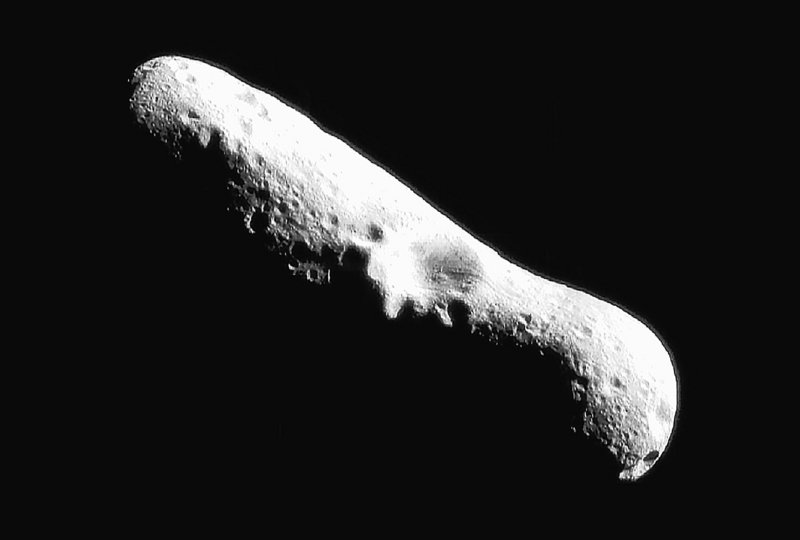WASHINGTON — Scientists have found lots of life-essential water – frozen as ice – in an unexpected place in our solar system: an asteroid between Mars and Jupiter.
The discovery of significant asteroid ice has several consequences. It could help explain where early Earth first got its water. It makes asteroids more attractive to explore, dovetailing with President Obama’s announcement earlier this month that astronauts should visit an asteroid. And it even muddies the definition between comets and asteroids, potentially triggering a Pluto-like scientific spat over what to call these solar system bodies.
This asteroid has an extensive but thin frosty coating. It is likely replenished by an extensive reservoir of frozen water deep inside rock once thought to be dry and desolate, scientists report in two studies in Thursday’s issue of the journal Nature.
Two teams of scientists used a NASA telescope in Hawaii to look at an asteroid called 24 Themis, one of the bigger rocks in the asteroid belt between Mars and Jupiter. They examined light waves bouncing off the rock and found the distinct chemical signature of ice, said the University of Central Florida’s Humberto Campins, a lead author of one of the studies.
Astronomers have long theorized that hydrogen and oxygen and bits of water locked in clay are in asteroids, but this is the first solid evidence. And what they found on 24 Themis, a rock more than 100 miles wide with temperatures around 100 degrees below zero Fahrenheit, was more than they ever expected. About a third of the rock seemed to be covered in frost.
Furthermore, scientists also found organic molecules, similar to what may have started life on Earth, Campins said.
“This asteroid holds clues to our past and how the solar system and water on Earth may have originated and it also has clues to our future with exploration of near-Earth asteroids,” Campins said. “We’re showing that they’re wetter than we thought. We’re showing they have organic molecules that might have been the building blocks of life on Earth.”
Earth, when it formed billions of years ago was dry, scientists say. So where did the water come from? One leading theory is from crashing comets, that are essentially icy snowballs.
But comets come from the outer reaches of the solar system and tend to have more heavy hydrogen than the water in our oceans, said Donald Yeomans, manager of NASA’s Near Earth Object Program office. Icy asteroids between Mars and Jupiter might have the right heavy hydrogen ratio to match what’s on Earth, said Yeomans, who wasn’t involved in the studies.
MIT’s Richard Binzel, also praised the studies, calling the findings “one more piece in the puzzle for an abundance of water arriving on Earth and having available the ingredients for life.”
Send questions/comments to the editors.



Success. Please wait for the page to reload. If the page does not reload within 5 seconds, please refresh the page.
Enter your email and password to access comments.
Hi, to comment on stories you must . This profile is in addition to your subscription and website login.
Already have a commenting profile? .
Invalid username/password.
Please check your email to confirm and complete your registration.
Only subscribers are eligible to post comments. Please subscribe or login first for digital access. Here’s why.
Use the form below to reset your password. When you've submitted your account email, we will send an email with a reset code.